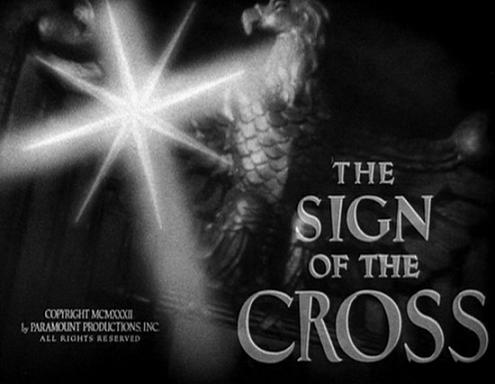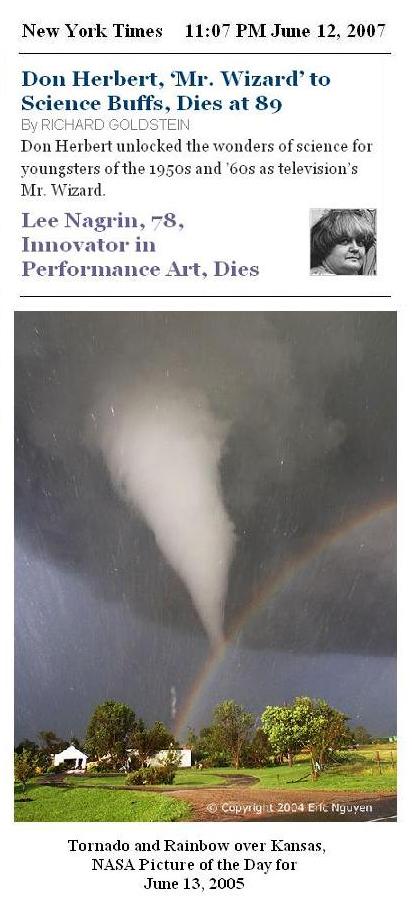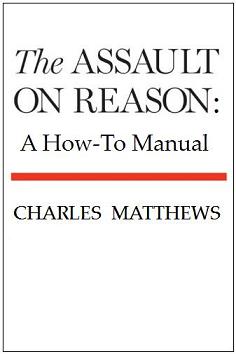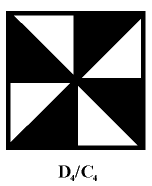Saturday, June 30, 2007
November 2004–

Controversial
"Desperate Housewives"
ad on "Monday
Night Football"
"Desperate Housewives"… ranks No. 5 among all prime-time shows for ages 12-17. ("Monday Night Football" is No. 18.) This may explain in part why its current advertisers include products like Fisher-Price toys, the DVD of "Elf" and the forthcoming Tim Allen holiday vehicle, "Christmas With the Kranks."
Those who cherish the First Amendment can only hope that the Traditional Values Coalition, OneMillionMoms.com, OneMillionDads.com and all the rest send every e-mail they can to the F.C.C. demanding punitive action against the stations that broadcast "Desperate Housewives." A "moral values" crusade that stands between a TV show this popular and its audience will quickly learn the limits of its power in a country where entertainment is god.
— "The Great Indecency Hoax," a New York Times column by Frank Rich quoted in Log24 on Nov. 26, 2004
|
The entertainment continues. A rabbi's obituary in today's New York Times (see previous entry) served as ad-bait for "Joshua," a Fox Searchlight film opening July 6.
A search for a less sacrilegious memorial to the rabbi yields the following:

The "Project MUSE" link above
works only at
subscribing libraries.
It seems that here, too,
the rabbi is being
used as bait.
For a perhaps preferable
reference to bait, in the
context of St. Peter as
a "fisher of men," see
the Christian "mandorla"
or "vesica piscis,"
a figure hidden within
the geometry of Rome's
St. Peter's Square–
which, despite its name,
is an oval:

For the geometric
construction of the
Roman oval, see
"ovato tondo" in
Rudolf Arnheim's
The Power of the Center.
For a less theoretical account
of the religious significance
of the mandorla, see
the 2001 film
The Center of the World.
Comments Off on Saturday June 30, 2007
An Evening Star
for Rabbi Abraham Klausner,
a “father figure” according to
The New York Times.
The Times says Klausner
died at 92 on
|
Sunday, May 14, 2006
Today’s birthday: George Lucas,
creator of the mother of all battle epics.
STAR WARS continued:
|
In the details:

Clicking on “Joshua” will take you
to a site on a film opening
July 6. That site describes
the title character as follows:
“Joshua is no ordinary boy….
He’s exceptionally intelligent and frighteningly precocious.
He has an angelic politeness and an easy cool that belie his young age….
Is it all a series of eerie coincidences or are they in the midst of an unimaginably evil mind? And could it be Joshua who, like his Biblical namesake, is bringing the house tumbling down around his family?” |
The “Biblical namesake” is the
Joshua of the Old Testament–
source of the deeply flawed
“tumbling down” analogy.
In the New Testament,
Comments Off on Saturday June 30, 2007
Comments Off on Saturday June 30, 2007
| |
Today’s birthday: George Lucas,
creator of the mother of all battle epics.
STAR WARS continued:
|
Comments Off on Saturday June 30, 2007
Thursday, June 28, 2007
Real Numbers:
An Object Lesson
A Cornell professor discusses a poem by Wallace Stevens:
"Professor Eucalyptus in 'Ordinary Evening' XIV, for example, 'seeks/ God in the object itself,' but this quest culminates in his own choosing of 'the commodious adjective/ For what he sees… the description that makes it divinity, still speech… not grim/ Reality but reality grimly seen/ And spoken in paradisal parlance new'…."
"God in the object" seems
unlikely to be found in the
artifact pictured on the
cover of Mao's book:
I have more confidence
that God is to be found
in the Ping Pong balls
of the New York Lottery.

These objects may be
regarded as supplying
a parlance that is, if not
paradisal, at least
intelligible– if only in
the context of my own
personal experience:
Journal entry dated 5/14:
Comments Off on Thursday June 28, 2007
Christianus
Cornelius Uhlenbeck
Oct. 18, 1866 – Aug. 12, 1951
“… born at Voorburg near The Hague in Holland, and studied philology at the University of Leiden…. Though he would actually have preferred to graduate in Basque, Uhlenbeck in 1888, when only 22 years old, took his doctor’s degree in Dutch. It must be here noted that for this degree the requirements in comparative philology were very considerable….” —
International Journal of American Linguistics, Jan. 1953
From Uhlenbeck’s
A Manual of Sanskrit Phonetics (1898):
“The Indogermanic family of languages. The great family of languages, in which Sanskrit belongs, is called the Indogermanic, Indoceltic or Aryan…. The word Indogermanic dates from a time, when it was not yet proved, that the Celtic dialects also make part of our family of languages, and indicates by the combined name of the utmost branches, Indian and Germanic, the whole territory of speech, to which they belong. Now that it is certain, that Celtic also is a member of our family, it would be accurate to replace the word Indogermanic by Indoceltic, because not Germanic, but Celtic is the utmost branch in the Occident. The name Indogermanic however is generally adopted and it would be impossible to supplant it by another. By the word Aryan is generally understood a certain subdivision of the Indogermanic family, viz. the Indo-Iranian, and therefore it would seem unsuitable to use this name also for the whole Indogermanic family.”
Comments Off on Thursday June 28, 2007
Wednesday, June 27, 2007
Juneteenth Revisited:
A Long and Strange Day
Time and chance
yesterday:
Pennsylvania Lottery
June 26, 2007–
Mid-day 040
Evening 810
040:
A discussion of the work of Ralph Ellison:
"… why do you think he did not finish these novels? He wrote on them for many, many years– 40 years, I think."
"Yes, he worked for 40 years."
See Ellison's novel Juneteenth (New York Times review, 1999)
810:
August 10 (8/10), 2004 —
"But all things then were oracle and secret.
Remember the night when,
lost, returning, we turned back
Confused, and our headlights
singled out the fox?
Our thoughts went with it then,
turning and turning back
With the same terror,
into the deep thicket
Beside the highway,
at home in the dark thicket.
I say the wood within is the dark wood…."
— Donald Justice, "Sadness"
John Baez, Diary, entry of June 22, 2007:
"On Tuesday the 19th….
I hiked down the completely dark but perfectly familiar gravel road with my suitcase in hand, listening to the forest creatures. But then, I couldn't find my parents' driveway! It was embarrassing: I could see their house perfectly well, off in the distance, but it was so darn dark I couldn't spot the driveway. It felt like a dream: after a long flight with many delays, one winds up walking to ones parents house, lost in a spooky forest….
… I sort of enjoy this kind of thing, as long as there's no real danger. It's also sort of scary. The well-lit grid of civilization slowly falls away, and you're out there alone in the night…
Anyway: I considered hiking straight through the woods to my parents' house, but I decided things were already interesting enough, so instead I called my mom and ask her to drive down the driveway a bit, just so I could see where it was. And so she did, and then it was obvious.
So, I got home shortly before midnight. A long and strange day. My dad was already in bed, but I said hi to him anyway."
Related material:
Juneteenth through
Midsummer Night
Comments Off on Wednesday June 27, 2007
Monday, June 25, 2007
Object Lesson
"… the best definition
I have for Satan
is that it is a real
spirit of unreality."
M. Scott Peck,
People of the Lie
"Far in the woods they sang
their unreal songs,
Secure. It was difficult
to sing in face
Of the object. The singers
had to avert themselves
Or else avert the object."
— Wallace Stevens,
"Credences of Summer"
|
Today is June 25,
anniversary of the
birth in 1908 of
Willard Van Orman Quine.
Quine died on
Christmas Day, 2000.
Today, Quine's birthday, is,
as has been noted by
Quine's son, the point of the
calendar opposite Christmas–
i.e., "AntiChristmas."
If the Anti-Christ is,
as M. Scott Peck claims,
a spirit of unreality, it seems
fitting today to invoke
Quine, a student of reality,
and to borrow the title of
Quine's Word and Object…
Word:
An excerpt from
"Credences of Summer"
by Wallace Stevens:
"Three times the concentred
self takes hold, three times
The thrice concentred self,
having possessed
The object, grips it
in savage scrutiny,
Once to make captive,
once to subjugate
Or yield to subjugation,
once to proclaim
The meaning of the capture,
this hard prize,
Fully made, fully apparent,
fully found."
— "Credences of Summer," VII,
by Wallace Stevens, from
Transport to Summer (1947)
|
Object:
From Friedrich Froebel,
who invented kindergarten:

From Christmas 2005:
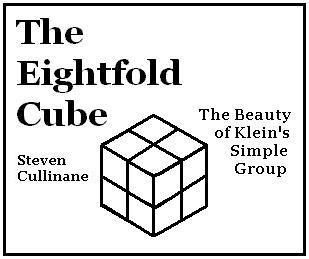
Click on the images
for further details.
For a larger and
more sophisticaled
relative of this object,
see yesterday's entry
At Midsummer Noon.
The object is real,
not as a particular
physical object, but
in the way that a
mathematical object
is real — as a
pure Platonic form.
"It's all in Plato…."
— C. S. Lewis
Comments Off on Monday June 25, 2007
Sunday, June 24, 2007
Raiders of
the Lost Stone
(Continued from June 23)
Charles Williams:
"In Many Dimensions (1931)
Williams sets before his reader the
mysterious Stone of King Solomon,
an image he probably drew
from a brief description in Waite's
The Holy Kabbalah (1929)
of a supernatural cubic stone
on which was inscribed
Comments Off on Sunday June 24, 2007
Midsummer Night
in the Garden
of Good and Evil

"I Put a Spell on You"
— Nina Simone,
title of autobiograpy
"The voodoo priestess looked across the table at her wealthy client, a man on trial for murder: 'Now, you know how dead time works. Dead time lasts for one hour– from half an hour before midnight to half an hour after midnight. The half-hour before midnight is for doin' good. The half-hour after midnight is for doin' evil….'"
— Glenna Whitley, "Voodoo Justice," The New York Times, March 20, 1994
Robert Pirsig,
Zen and the Art of Motorcycle Maintenance, 1974:
"But what's happening is that each year our old flat earth of conventional reason becomes less and less adequate to handle the experiences we have and this is creating widespread feelings of topsy-turviness. As a result we're getting more and more people in irrational areas of thought… occultism, mysticism, drug changes and the like… because they feel the inadequacy of classical reason to handle what they know are real experiences."
"I'm not sure what you mean by classical reason."
"Analytic reason, dialectic reason. Reason which at the University is sometimes considered to be the whole of understanding. You've never had to understand it really. It's always been completely bankrupt with regard to abstract art. Nonrepresentative art is one of the root experiences I'm talking about. Some people still condemn it because it doesn’t make 'sense.' But what's really wrong is not the art but the 'sense,' the classical reason, which can't grasp it. People keep looking for branch extensions of reason that will cover art's more recent occurrences, but the answers aren't in the branches, they're at the roots."
"Let the midnight special
shine her light on me."

Comments Off on Sunday June 24, 2007
Saturday, June 23, 2007
Comments Off on Saturday June 23, 2007
“As though their knowledge of the quantum secrets came with the power of prophecy, some three dozen of Europe’s best physicists ended their 1932 meeting in Copenhagen with a parody of Goethe’s ‘Faust.’….
It was only in retrospect that the silliness became profound. The players were becoming possessors of ‘a truth with implicit powers of good and evil,’ Gino Segrè writes in ‘Faust in Copenhagen,’ his inventive new book about the era. And ‘the devil… was in the details.'” –George Johnson
Comments Off on Saturday June 23, 2007
Friday, June 22, 2007
Comments Off on Friday June 22, 2007
Thursday, June 21, 2007
Comments Off on Thursday June 21, 2007
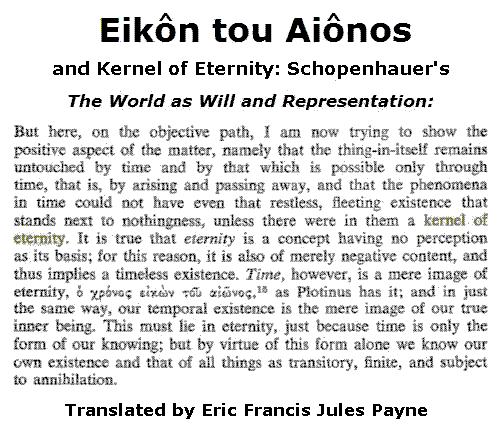
"Ich aber, hier auf dem objektiven Wege, bin jetzt bemüht, das Positive der Sache nachzuweisen, daß nämlich das Ding an sich von der Zeit und Dem, was nur durch sie möglich ist, dem Entstehen und Vergehen, unberührt bleibt, und daß die Erscheinungen in der Zeit sogar jenes rastlos flüchtige, dem Nichts zunächst stehende Dasein nicht haben könnten, wenn nicht in ihnen ein Kern aus der Ewigkeit* wäre. Die Ewigkeit ist freilich ein Begriff, dem keine Anschauung zum Grunde liegt: er ist auch deshalb bloß negativen Inhalts, besagt nämlich ein zeitloses Dasein. Die Zeit ist demnach ein bloßes Bild der Ewigkeit, ho chronos eikôn tou aiônos,** wie es Plotinus*** hat: und ebenso ist unser zeitliches Dasein das bloße Bild unsers Wesens an sich. Dieses muß in der Ewigkeit liegen, eben weil die Zeit nur die Form unsers Erkennens ist: vermöge dieser allein aber erkennen wir unser und aller Dinge Wesen als vergänglich, endlich und der Vernichtung anheimgefallen."
* "a kernel of eternity"
** "Time is the image of eternity."
*** "wie es Plotinus hat"–
Actually, not Plotinus, but Plato,
according to Diogenes Laertius.
Related material:
Time Fold,
J. N. Darby,
"On the Greek Words for
Eternity and Eternal
(aion and aionios),"
Carl Gustav Jung, Aion,
which contains the following
four-diamond figure,

and Jung and the Imago Dei.
Comments Off on Thursday June 21, 2007
"His graceful accounts of the Bach Suites for Unaccompanied Cello illuminated the works’ structural logic as well as their inner spirituality."
—Allan Kozinn on Mstislav Rostropovich in The New York Times, quoted in Log24 on April 29, 2007
"At that instant he saw, in one blaze of light, an image of unutterable conviction…. the core of life, the essential pattern whence all other things proceed, the kernel of eternity."
— Thomas Wolfe, Of Time and the River, quoted in Log24 on June 9, 2005
"… the stabiliser of an octad preserves the affine space structure on its complement, and (from the construction) induces AGL(4,2) on it. (It induces A8 on the octad, the kernel of this action being the translation group of the affine space.)"
— Peter J. Cameron, "The Geometry of the Mathieu Groups" (pdf)
"… donc Dieu existe, réponse!"
"Only gradually did I discover
what the mandala really is:
'Formation, Transformation,
Eternal Mind's eternal recreation'"
(Faust, Part Two, as
quoted by Jung in
Memories, Dreams, Reflections)

"Pauli as Mephistopheles
in a 1932 parody of
Goethe's Faust at Niels Bohr's
institute in Copenhagen.
The drawing is one of
many by George Gamow
illustrating the script."
— Physics Today
"Borja dropped the mutilated book on the floor with the others. He was looking at the nine engravings and at the circle, checking strange correspondences between them.
'To meet someone' was his enigmatic answer. 'To search for the stone that the Great Architect rejected, the philosopher's stone, the basis of the philosophical work. The stone of power. The devil likes metamorphoses, Corso.'"
— The Club Dumas, basis for the Roman Polanski film "The Ninth Gate" (See 12/24/05.)
"Pauli linked this symbolism
with the concept of automorphism."
— The Innermost Kernel
(previous entry)
And from
"Symmetry in Mathematics
and Mathematics of Symmetry"
(pdf), by Peter J. Cameron,
a paper presented at the
International Symmetry Conference,
Edinburgh, Jan. 14-17, 2007,
we have
The Epigraph–

(Here "whatever" should
of course be "whenever.")
Also from the
Cameron paper:
|
Local or global?
Among other (mostly more vague) definitions of symmetry, the dictionary will typically list two, something like this:
• exact correspondence of parts;
• remaining unchanged by transformation.
Mathematicians typically consider the second, global, notion, but what about the first, local, notion, and what is the relationship between them? A structure M is homogeneous if every isomorphism between finite substructures of M can be extended to an automorphism of M; in other words, "any local symmetry is global."
|
Some Log24 entries
related to the above politically
(women in mathematics)–
Global and Local:
One Small Step
and mathematically–
Structural Logic continued:
Structure and Logic (4/30/07):
This entry cites
Alice Devillers of Brussels–

"The aim of this thesis
is to classify certain structures
which are, from a certain
point of view, as homogeneous
as possible, that is which have
as many symmetries as possible."
"There is such a thing
as a tesseract."
— Madeleine L'Engle
Comments Off on Thursday June 21, 2007
Wednesday, June 20, 2007
Kernel
Mathematical Reviews citation:
MR2163497 (2006g:81002) 81-03 (81P05)
Gieser, Suzanne The innermost kernel. Depth psychology and quantum physics. Wolfgang Pauli's dialogue with C. G. Jung. Springer-Verlag, Berlin, 2005. xiv+378 pp. ISBN: 3-540-20856-9
A quote from MR at Amazon.com:
"This revised translation of a Swedish Ph. D. thesis in philosophy offers far more than a discussion of Wolfgang Pauli's encounters with the psychoanalyst Carl Gustav Jung…. Here the book explains very well how Pauli attempted to extend his understanding beyond superficial esotericism and spiritism…. To understand Pauli one needs books like this one, which… seems to open a path to a fuller understanding of Pauli, who was seeking to solve a quest even deeper than quantum physics." (Arne Schirrmacher, Mathematical Reviews, Issue 2006g)
An excerpt:
I do not yet know what Gieser means by "the innermost kernel." The following is my version of a "kernel" of sorts– a diagram well-known to students of anthropologist
Claude Levi-Strauss and art theorist
Rosalind Krauss:
The four-group is also known as the Vierergruppe or Klein group. It appears, notably, as the translation subgroup of A, the group of 24 automorphisms of the affine plane over the 2-element field, and therefore as the kernel of the homomorphism taking A to the group of 6 automorphisms of the projective line over the 2-element field. (See Finite Geometry of the Square and Cube.)
Comments Off on Wednesday June 20, 2007
Tuesday, June 19, 2007
Faustus is gone:
regard his hellish fall
— Marlowe
I have just read, in the New York Times Book Review that arrived in yesterday's mail, a review of Segre's Faust in Copenhagen. The review, on news stands next Sunday, was titled by the Times "Meta Physicists."
On Faust— today's noon entry and yesterday's "Nightmare Lessons."
On "Meta Physicists"– an entry of June 6, on Cullinane College, has a section titled "Meta Physics."
On Copenhagen— an entry of Bloomsday Eve, 2004 on a native of that city.
Another Dane:
"Words, words, words."
— Hamlet
Another metaphysics:
"317 is a prime,
not because we think so,
or because our minds
are shaped in one way
rather than another,
but because it is so,
because mathematical
reality is built that way."
— G. H. Hardy,
A Mathematician's Apology
Comments Off on Tuesday June 19, 2007
Comments Off on Tuesday June 19, 2007
Let Noon Be Fair
— Title of a novel
by Willard Motley
A review of
Helene Cixous's
Three Steps on the Ladder of Writing:
"Cixous explores three distinct 'schools' that produce what she envisions as great writing– the Schools of the Dead, of Dreams, and of Roots. Cixous invests much weight in the purposefully ambiguous nature of the word 'school'; she seems to refer to a motivation, conscious or unconscious, that directs, influences, and shapes writing; at other times she seems to want to speak of actual places from whence we get instruction (again, consciously or unconsciously)."
From Under the Volcano, by Malcolm Lowry, 1947, Chapter I:
Faustus is gone: regard his hellish fall —
"Shaken, M. Laruelle replaced the book on the table… he reached to the floor for a folded sheet of paper that had fluttered out of it. He picked the paper up between two fingers and unfolded it, turning it over.
Hotel Bella Vista, he read."
From The Shining, Chapter 18:
"In 1961 four writers, two of them Pulitzer Prize winners, had leased the Overlook and reopened it as a writers' school. That had lasted one year…. Every big hotel has got a ghost. Why? Hell, people come and go…. (In the room the women come and go)" –Quoted in Shining Forth

Photo: jewishbookweek.com
Jacques Derrida and Helene Cixous
Time of this entry:
Noon.
Comments Off on Tuesday June 19, 2007
Let No Man Write
My Epitaph
— Title of a novel
by Willard Motley
"Recall the passage in the Odyssey when he [Ulysses] encounters the Cyclops Polyphemos. Trying to disguise himself, to hide himself, Ulysses calls himself Outis– nobody, no man, personne. Here, in a strategy of simple erasure, the Subject masks his singularity behind no one, das Man (here in a sense that does not depend on the Heidggerian distinction between the authentic Dasein and the inauthentic das Man). In French, Outis is translated as personne, meaning no one, no particular subject."
— Jacques Derrida, "Summary of Impromptu Remarks," pp. 39-45 in Anyone, ed. by Cynthia Davidson (New York: Rizzoli International, 1991)
"In A GOOD YEAR, more than one reference is made to the secret of comedy. It's all in the timing, two characters explain." —Review at epinions.com
Comments Off on Tuesday June 19, 2007
Monday, June 18, 2007
Nightmare Lessons “
We are going to keep doing this until we get it right.”
—
Log24 on June 15
Obituaries in the News
By THE ASSOCIATED PRESS
Published: Monday, June 18, 2007
in The New York Times
Filed at 6:13 a.m. ET
Norman Hackerman
“AUSTIN, Texas (AP) — Norman Hackerman, a chemist … died Saturday [June 16] …. He was 95. … He taught chemistry … before joining the Manhattan Project to develop a nuclear weapon during World War II.”
The date of Hackerman’s death is celebrated in Ireland as Bloomsday— the day on which, in 1904, the events of James Joyce’s novel Ulysses came to pass.
From Log24 on Bloomsday 2007:
Scene from
“Behind the Lid” —

Photo by Richard Termine
“Behind the Lid” is an avant-garde production featuring scenes from the author’s life presented in the form of dreams.
Those who like such scenes may consult past Log24 entries. They will find, for instance, the following, commemorating a death which, like Hackerman’s, occurred on a Bloomsday:
Click on the picture for details.
“History, Stephen said,
is a nightmare
from which I am
trying to awake.”
— Ulysses
Comments Off on Monday June 18, 2007

Yesterday, Father's Day, was also the
anniversary of the Battle of Bunker Hill.
Bunker Hill Community College
was the site yesterday of the
New England Fine Arts Fair.
|

Folk are humpin'
And the chillun is high.
Oh yo' daddy's rich,
'Cos yo' ma is good lookin'…
|
"By all means accept the invitation to hell, should it come. It will not take you far– from Cambridge to hell is only a step; or at most a hop, skip, and jump. But now you are evading– you are dodging the issue…. after all, Cambridge is hell enough."
— Great Circle, a 1933 novel by Conrad Aiken (father of Joan Aiken, who wrote The Shadow Guests)
Comments Off on Monday June 18, 2007
Sunday, June 17, 2007
A selection from the
Stephen King Hymnal
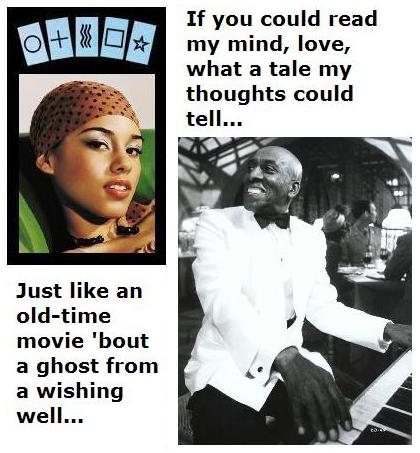
“… it’s going to be
accomplished in steps,
this establishment
of the Talented in
the scheme of things.”
— Anne McCaffrey,
Radcliffe ’47,
To Ride Pegasus
See also
Part I and Part II.
Comments Off on Sunday June 17, 2007
No Place Like Home:
A Father's Day Special
for Stephen King

"… the poet's search
for the same exterior
made / Interior"
— Wallace Stevens
"Imago. Imago. Imago."
— Wallace Stevens
(See previous entry.)
Stevens's phrase was
the epigraph to
The Imago Sequence,
a novella published
in May 2005.
From a review
(containing a spoiler)
of the novella:
"The Imago Sequence are three notable photographs taken by an otherwise unnotable photographer. They are photographs taken underground, location a well kept secret, and show either a bizarre rock formation carved out over millenia, or perhaps the imprint of a fossiled hominid in an anguished pose.
The photographs can have an impact on the viewer, and have had a history of having a major impact on the owners. One has changed hands, and the new owner shows off his new prized objet d'art, and sets one of his employees the tasks [sic] of identifying the location of the third in the sequence…."
Greensburg, Kansas
prior to
May 4, 2007:

This may be taken
as a reference to
today's previous entry.
That entry, like
the novella
The Imago Sequence,
contains a sequence
of three photographs.
The sequence was made
a month or so after the
novella was published,
but I was unaware
until this afternoon
that the novella existed.
Besides
"Imago Imago Imago,"
two other phrases
come to mind…
The real estate motto
"Location, Location, Location"
and Stevens again—
"Adam in Eden was the
father of Descartes."
Happy Father's Day.
Comments Off on Sunday June 17, 2007
Comments Off on Sunday June 17, 2007
Saturday, June 16, 2007
By THE ASSOCIATED PRESS
Published: June 16, 2007,
in The New York Times
Filed at 7:10 a.m. ET
Samuel Isaac Weissman
ST. LOUIS (AP) — Samuel Isaac Weissman, a professor and chemist who helped develop the first atomic bomb as part of the Manhattan Project, has died. He was 94.
Weissman died Tuesday [June 12]….
From Log24
on Tuesday,
June 12:
Sky Fish

Illustration from
LOGOS
(May 17, 2007)
From today's
New York Times:

Photo by Richard Termine
Scene from "Behind the Lid"
(See the Log24 entries from
June 12, the date of
Weissman's death.)
From Ben Brantley's
review of "Behind the Lid,"
a quote from the author:
"Her life, her voice says,
was devoted to discovering
'the inside on the outside,
the outside on the inside.'"
Related material:
Julie Taymor—
"They did it from
the inside to the outside.
And from the outside to the in.
And that profoundly
moved me then. It was…
it was the most important thing
that I ever experienced."
Wallace Stevens—
Professor Eucalyptus said,
"The search/ For reality
is as momentous as/
The search for God."
It is the philosopher's search/
For an interior made exterior/
And the poet's search
for the same exterior
made/ Interior….
Comments Off on Saturday June 16, 2007
Comments Off on Saturday June 16, 2007
Friday, June 15, 2007
Geometry and Death
(continued from Dec. 11, 2006):
J. G. Ballard on "the architecture of death":
"… a huge system of German fortifications that included the Siegfried line, submarine pens and huge flak towers that threatened the surrounding land like lines of Teutonic knights. Almost all had survived the war and seemed to be waiting for the next one, left behind by a race of warrior scientists obsessed with geometry and death."
— The Guardian, March 20, 2006
From the previous entry, which provided a lesson in geometry related, if only by synchronicity, to the death of Jewish art theorist Rudolf Arnheim:
"We are going to keep doing this until we get it right."
Here is a lesson related, again by synchronicity, to the death of a Christian art scholar of "uncommon erudition, wit, and grace"– Robert R. Wark of the Huntington Library. Wark died on June 8, a date I think of as the feast day of St. Gerard Manley Hopkins, a Jesuit priest-poet of the nineteenth century.
From a Log24 entry on the date of Wark's death–
Samuel Pepys on a musical performance (Diary, Feb. 27, 1668):
"When the Angel comes down"
"When the Angel Comes Down, and the Soul Departs," a webpage on dance in Bali:
"Dance is also a devotion to the Supreme Being."
Julie Taymor, interview:
"I went to Bali to a remote village by a volcanic mountain…."
The above three quotations were intended to supply some background for a link to an entry on Taymor, on what Taymor has called "skewed mirrors," and on a related mathematical concept named, using a term Hopkins coined, "inscapes."
They might form part of an introductory class in mathematics and art given, like the class of the previous entry, in Purgatory.
Wark, who is now, one imagines, in Paradise, needs no such class. He nevertheless might enjoy listening in.
A guest teacher in
the purgatorial class
on mathematics
and art:


"Is it safe?"
Comments Off on Friday June 15, 2007
A Study in
Art Education
Rudolf Arnheim, a student of Gestalt psychology (which, an obituary notes, emphasizes "the perception of forms as organized wholes") was the first Professor of the Psychology of Art at Harvard. He died at 102 on Saturday, June 9, 2007.
The conclusion of yesterday's New York Times obituary of Arnheim:
"… in The New York Times Book Review in 1986, Celia McGee called Professor Arnheim 'the best kind of romantic,' adding, 'His wisdom, his patient explanations and lyrical enthusiasm are those of a teacher.'"
A related quotation:
"And you are teaching them a thing or two about yourself. They are learning that you are the living embodiment of two timeless characterizations of a teacher: 'I say what I mean, and I mean what I say' and 'We are going to keep doing this until we get it right.'"
— Tools for Teaching
Here, yet again, is an illustration that has often appeared in Log24– notably, on the date of Arnheim's death:

Related quotations:
"We have had a gutful of fast art and fast food. What we need more of is slow art: art that holds time as a vase holds water: art that grows out of modes of perception and whose skill and doggedness make you think and feel; art that isn't merely sensational, that doesn't get its message across in 10 seconds, that isn't falsely iconic, that hooks onto something deep-running in our natures. In a word, art that is the very opposite of mass media. For no spiritually authentic art can beat mass media at their own game."
— Robert Hughes, speech of June 2, 2004
"Whether the 3×3 square grid is fast art or slow art, truly or falsely iconic, perhaps depends upon the eye of the beholder."
— Log24, June 5, 2004
If the beholder is Rudolf Arnheim, whom we may now suppose to be viewing the above figure in the afterlife, the 3×3 square is apparently slow art. Consider the following review of his 1982 book The Power of the Center:
"Arnheim deals with the significance of two kinds of visual organization, the concentric arrangement (as exemplified in a bull's-eye target) and the grid (as exemplified in a Cartesian coordinate system)….
It is proposed that the two structures of grid and target are the symbolic vehicles par excellence for two metaphysical/psychological stances. The concentric configuration is the visual/structural equivalent of an egocentric view of the world. The self is the center, and all distances exist in relation to the focal spectator. The concentric arrangement is a hermetic, impregnable pattern suited to conveying the idea of unity and other-worldly completeness. By contrast, the grid structure has no clear center, and suggests an infinite, featureless extension…. Taking these two ideal types of structural scaffold and their symbolic potential (cosmic, egocentric vs. terrestrial, uncentered) as given, Arnheim reveals how their underlying presence organizes works of art."
— Review of Rudolf Arnheim's The Power of the Center: A Study of Composition in the Visual Arts (Univ. of Calif. Press, 1982). Review by David A. Pariser, Studies in Art Education, Vol. 24, No. 3 (1983), pp. 210-213
Arnheim himself says in this book (pp. viii-ix) that "With all its virtues, the framework of verticals and horizontals has one grave defect. It has no center, and therefore it has no way of defining any particular location. Taken by itself, it is an endless expanse in which no one place can be distinguished from the next. This renders it incomplete for any mathematical, scientific, and artistic purpose. For his geometrical analysis, Descartes had to impose a center, the point where a pair of coordinates [sic] crossed. In doing so he borrowed from the other spatial system, the centric and cosmic one."
Students of art theory should, having read the above passages, discuss in what way the 3×3 square embodies both "ideal types of structural scaffold and their symbolic potential."
We may imagine such a discussion in an afterlife art class– in, perhaps, Purgatory rather than Heaven– that now includes Arnheim as well as Ernst Gombrich and Kirk Varnedoe.
Such a class would be one prerequisite for a more advanced course– Finite geometry of the square and cube.
Comments Off on Friday June 15, 2007
Thursday, June 14, 2007
A Time
for Remembering
June 9, the birthday of
Aaron Sorkin, a writer
mentioned in recent
Log24 entries, was also
the birthday of writer
Patricia Cornwell.
An illustration
from that date:

Cornwell's first book was
a biography of
Ruth Bell Graham,
A Time for Remembering.
"Seven is heaven,
Eight is a gate,
Nine is a vine."
Comments Off on Thursday June 14, 2007
"Kurt Waldheim, the former United Nations Secretary General and President of Austria whose hidden ties to Nazi organizations and war crimes was [sic] exposed late in his career, died today at his home in Vienna. He was 88." —The New York Times this afternoon
Related material:
From a story by
Leonard Michaels
linked to on
Aaron Sorkin's
birthday, June 9:
"Induction and analogy, in which he was highly gifted, were critical to mathematical intelligence.
It has been said that the unexamined life isn't worth living. Nachman wasn't against examining his life, but then what was a life? ….
… As for 'a life,' it was what you read about in newspaper obituaries. He didn't need one. He would return to California and think only about mathematics."

"One two three four,
who are we for?"
Comments Off on Thursday June 14, 2007
Comments Off on Thursday June 14, 2007
Trifecta
Arts & Letters Daily (14 Jun 2007):
Every time an economic impact study comes out, you know the pigs are at the pastry cart. “Save your city by giving money to the arts!” Yeah, sure… more
Democracy can flourish in India only if every citizen resists the will to dominate and accepts the reality and equality of others… more
The American left has turned into a skittish, hysterical old lady who lives in the past, falls for pseudo-intellectual garbage, and runs from real conflict or responsibility… more
Comments Off on Thursday June 14, 2007
Unscholarly Notes
The time of
the previous entry, 1:06:18, suggests both the date of Epiphany, 1:06, and
Hexagram 18 of the I Ching:
Ku, Work on what has been spoiled (Decay).
Epiphany: A link in the Log24 entries for Epiphany 2007 leads to Damnation Morning, which in turn leads to Why Me?, a discussion of the mythology of Spiders vs. Snakes devised by Fritz Leiber. Spiders represent the conscious mind, snakes the unconscious.
On Hexagram 18: "The Chinese character ku represents a bowl in whose contents worms are breeding. This means decay." —Wilhelm's commentary
This brings us back to the previous entry with its mention of the date of Rudolf Arnheim's death: Saturday, June 9. In Log24 on that date there was a link, in honor of Aaron Sorkin's birthday, to a short story by Leonard Michaels. That link was suggested, in part, by a review in the Sunday New York Times Book Review (available online earlier, on Friday). Here is a quote from that review related to the Hexagram 18 worm bowl:
"… what grabbed attention for his early collections was Michaels's gruesome, swaggering depiction of the sexual rampage that was the swinging '60s in New York– 'the worm bucket,' as Michaels described an orgy."
Related material for meditation on this, the anniversary (according to Encyclopaedia Britannica) of the birth of author Jerzy Kosinski— his novel The Hermit of 69th Street.
Kosinski was not unfamiliar with Michaels's worm bucket. For related information, see Hermit (or at least a review).
In Leiber's stories the symbol of the Snakes is similar to the famed Yin-Yang symbol, also known as the T'ai-chi tu. For an analysis of this symbol by Arnheim, see the previous entry. See also "Sunday in the Park with Death" (Log24, Oct. 26, 2003):

"Ay que bonito es volar
A las dos de la mañana…."
— "La Bruja"
Comments Off on Thursday June 14, 2007
Scholarly Notes
In memory of
Rudolf Arnheim,
who died on
Saturday, June 9
“Originally trained in Gestalt psychology, with its emphasis on the perception of forms as organized wholes, he was one of the first investigators to apply its principles to the study of art of all kinds.” —
Today’s New York Times
From the Wikipedia article on Gestalt psychology prior to its modification on May 31, 2007:
“Emergence, reification, multistability, and invariance are not separable modules to be modeled individually, but they are different aspects of a single unified dynamic mechanism.
For a mathematical example of such a mechanism using the cubes of psychologists’ block design tests, see Block Designs in Art and Mathematics and The Kaleidoscope Puzzle.”
The second paragraph of the above passage refers to my own work.
Some Gestalt-related work of Arnheim:

Comments Off on Thursday June 14, 2007
Wednesday, June 13, 2007
A Flaming Cross
for Spain

Click for details.
Related flaming crosses:
Nov. 19, 2004
and
Nov. 21, 2004.
(This entry was actually made
just before noon on June 14.
Its time, 6:29, was reserved
earlier in honor of
the date 6/29.)
Comments Off on Wednesday June 13, 2007
Tony:

One Notch Above
Maureen Dowd in today’s New York Times on “Sopranos” creator David Chase:
“Mr. Chase, an apocalyptic tease, gave us a gimmicky and unsatisfying film-school-style blackout for an end to his mob saga, a stunt one notch above ‘It was all a dream.'”
Comments Off on Wednesday June 13, 2007
Tuesday, June 12, 2007
Comments Off on Tuesday June 12, 2007
Sky Fish

Illustration from
LOGOS
(May 17, 2007)
From an obituary in today's New York Times:
"Lee Nagrin, a noted Off Broadway performance artist… died Thursday in Manhattan. She was 78….
She formed her own company, the Sky Fish Ensemble, in 1979 and presented performance-art pieces that tended to unspool like fairy tales, filled with mysterious, archetypal imagery. Her own presence was mysterious, too, both on and off the stage, often conjuring up the sense of a keen-eyed, all-seeing, benign witch.
She created some of those images midperformance, as when she traced a landscape along brown paper that ringed the stage space of Silver Whale Gallery, where much of her work was performed.
For her last piece, 'Behind the Lid,' she collaborated with the puppeteer Basil Twist on a story in which a woman looks back on her life through a dream. Performances are this month at the Silver Whale."
LEE NAGRIN AND BASIL TWIST’S
BEHIND THE LID
Tuesday – Sunday @ 8PM
June 3rd – June 28th
Silver Whale Gallery
"Silver Whale Gallery (21 Bleecker Street) proudly announces the world premiere of BEHIND THE LID, a new play by playwright/performer Lee Nagrin and puppeteer/performer Basil Twist that chronicles a woman looking back on her life through a dream; her memories expand, open and reveal while an intimate audience of 18 will travel with her through this hand made world. Audience members are guided by a young familiar through this older woman's life and dreams. They experience layer upon layer of the life of an American artist – Lee Nagrin. Basil Twist creates the puppetry and performs.
Tickets for BEHIND THE LID are $40. To purchase tickets, please call Smarttix.com at 212-868-4444 or for more information visit www.leenagrin.com on the Internet."
From Log24
on June 7, the date
of Nagrin's death:
"… Packaging is unavoidable.
Facts rarely, if ever,
speak for themselves."
— Matthew C. Nisbet,
Assistant Professor
of "Communication,"
June 6, 2007
From the
New York Lottery
on June 7, the date
of Nagrin's death:
Mid-day: 603
Evening: 805
Another opening of
another show.
Comments Off on Tuesday June 12, 2007
Monday, June 11, 2007
Comments Off on Monday June 11, 2007
Sunday, June 10, 2007
Torbellino

WHAT MAKES IAGO EVIL? some people ask. I never ask. —Joan Didion
Iago states that he is not who he is. —Mark F. Frisch
La historia agrega que, antes o después de morir, se supo frente a Dios y le dijo: «Yo, que tantos hombres he sido en vano, quiero ser uno y yo». La voz de Dios le contestó desde un torbellino: «Yo tampoco soy; yo soñé el mundo como tú soñaste tu obra, mi Shakespeare, y entre las formas de mi sueño estabas tú, que como yo eres muchos y nadie». —Jorge Luis Borges
Comments Off on Sunday June 10, 2007
Like a Melody
An excerpt from
The Miracle of the Bells
quoted in
A Mass for Lucero—
"'A pretty girl–
is like a melody—- !'
But that was always
Bill Dunnigan's
Song of Victory….
Thus thought the…
press agent for
'The Garden of the Soul.'"
"Ay que bonito es volar
A las dos de la mañana…."
— "La Bruja"
For a rendition by
Salma Hayek, click
on the picture below.

Related material:
Log24 entries for
May 18, 2007.
Comments Off on Sunday June 10, 2007
Saturday, June 9, 2007
Comments Off on Saturday June 9, 2007
Friday, June 8, 2007
Comments Off on Friday June 8, 2007
The Source
"Beautiful indeed
is the source of truth.
To measure the changes
of time and space
the smartest are nothing." |
Comments Off on Friday June 8, 2007
Thursday, June 7, 2007
Framing
truth
On "framing" and "spin"
in journalism:
"… Packaging is unavoidable.
Facts rarely, if ever,
speak for themselves."
— Matthew C. Nisbet,
Assistant Professor
of "Communication,"
June 6, 2007
If they could, they might
say "We was framed!"
Facts cannot, of course,
speak for themselves
to those who do not
understand their language.
Example:
A picture that appeared in
Log24 on June 7, 2005:

Click for details.
Attempt to
frame the picture:
Analogies
"A functor is an analogy."
— Anonymous
The best mathematicians "see
analogies between analogies."
— Banach, according to Ulam
For further details,
click on the link
"Analogies" above.
See also the analogies in
the previous entry.
Comments Off on Thursday June 7, 2007
Masters of Chaos
From the May 6, 2007,
New York Times,
Charles McGrath on
Philip K. Dick:
His early novels, written in two weeks or less, were published in double-decker Ace paperbacks that included two books in one, with a lurid cover for each. "If the Holy Bible was printed as an Ace Double," an editor once remarked, "it would be cut down to two 20,000-word halves with the Old Testament retitled as 'Master of Chaos' and the New Testament as 'The Thing With Three Souls.'"

Click to enlarge.
As for "the thing with
three souls"–
Part I:
"Educate, Empower, Entertain"
— Motto of Yolanda King
Part II:
Three universities
(but not those of
Martin Myerson)–
Princeton, Harvard, Cambridge
Comments Off on Thursday June 7, 2007
Wednesday, June 6, 2007
If Cullinane College were Hogwarts–
Last-minute exam info:
The Lapis Philosophorum
"The lapis was thought of as a unity and therefore often stands for the prima materia in general."
— Aion, by C. G. Jung
"Its discoverer was of the opinion that he had produced the equivalent of the primordial protomatter which exploded into the Universe."
— The Stars My Destination, by Alfred Bester
And from Bester's The Deceivers:
Meta Physics
"'… Think of a match. You've got a chemical head of potash, antimony, and stuff, full of energy waiting to be released. Friction does it. But when Meta excites and releases energy, it's like a stick of dynamite compared to a match. It's the chess legend for real.'
'I don't know it.'
'Oh, the story goes that a philosopher invented chess for the amusement of an Indian rajah. The king was so delighted that he told the inventor to name his reward and he'd get it, no matter what. The philosopher asked that one grain of rice be placed on the first square of the chessboard, two on the second, four on the third, and so on to the sixty-fourth.'
'That doesn't sound like much.'
'So the rajah said. …'"
Related material:
Geometry of the I Ching
Comments Off on Wednesday June 6, 2007
Tuesday, June 5, 2007
Comments Off on Tuesday June 5, 2007
Devil in the Details
This morning was the
Princeton commencement.
Meanwhile…
Comments Off on Tuesday June 5, 2007
Princeton:
A Whirligig Tour

Symbol from a
website on
“Presbyterian
Creedal Standards”
The above symbol
appeared here
on 11/8/02.
Related material:
1. The remarks of
Bradley Whitford
at Princeton’s
Class Day yesterday:

2. An illustration from
Log 24 on 11/10/06:
3. The Whirligig of Time
(1/5/03):

4. Natalie Angier, priestess of Scientism
(5/26/07), and her new book
The Canon: A Whirligig Tour of
the Beautiful Basics of Science
(available as a special from
Amazon.com):
Comments Off on Tuesday June 5, 2007
Sunday, June 3, 2007
Dialogue
Albert Einstein–
“God does not play dice
with the universe.”
Reply by the
New Jersey Lottery on
Sunday, June 3, 2007–
Mid-day 220, evening 939.
Related material
Review of a 2004 production
of a 1972 Tom Stoppard
play, “Jumpers“–

Comments Off on Sunday June 3, 2007
Haunting Time
"Macquarrie remains one of the most
important commentators [on] …
Heidegger's work. His co-translation
of Being and Time into English is
considered the canonical version."
— Wikipedia

The Rev. Macquarrie died on
May 28. The Log24 entry
for that date contains the
following illustration:

The part of the illustration
relevant to the death of
Macquarrie is the color.
From my reply to
a comment on the
May 28 entry:
"I checked out [Terence] McKenna and found this site on the aging druggie. I didn't like the hippie scene in the sixties and I don't like it now. Booze was always my drug of choice. Still, checking further, I found that McKenna's afterword to Dick's In Pursuit of Valis was well written."
From McKenna's afterword:
"Schizophrenia is not a psychological disorder peculiar to human beings. Schizophrenia is not a disease at all but rather a localized traveling discontinuity of the space time matrix itself. It is like a travelling whirl-wind of radical understanding that haunts time. It haunts time in the same way that Alfred North Whitehead said that the color dove grey 'haunts time like a ghost.'"
I can find no source for
any remarks of Whitehead
on the color "dove grey"
(or "gray") but Whitehead
did say that
"A colour is eternal. It haunts time like a spirit. It comes and it goes. But where it comes it is the same colour. It neither survives nor does it live. It appears when it is wanted." —Science and the Modern World, 1925
The poetic remark of
McKenna on the color
"dove grey" may be
taken, in a schizophrenic
(or, similarly, a Christian) way,
as a reference to the Holy Spirit.
My own remarks on the hippie
scene seem appropriate as a
response to media celebration
of today's 40th anniversary of
the beginning of the 1967
"summer of love."
Comments Off on Sunday June 3, 2007
Saturday, June 2, 2007
“I don’t think the ‘diamond theorem’ is anything serious, so I started with blitzing that.”
— Charles Matthews at Wikipedia, Oct. 2, 2006
“The ‘seriousness’ of a mathematical theorem lies, not in its practical consequences, which are usually negligible, but in the significance of the mathematical ideas which it connects. We may say, roughly, that a mathematical idea is ‘significant’ if it can be connected, in a natural and illuminating way, with a large complex of other mathematical ideas.”
— G. H. Hardy, A Mathematician’s Apology
Comments Off on Saturday June 2, 2007





















